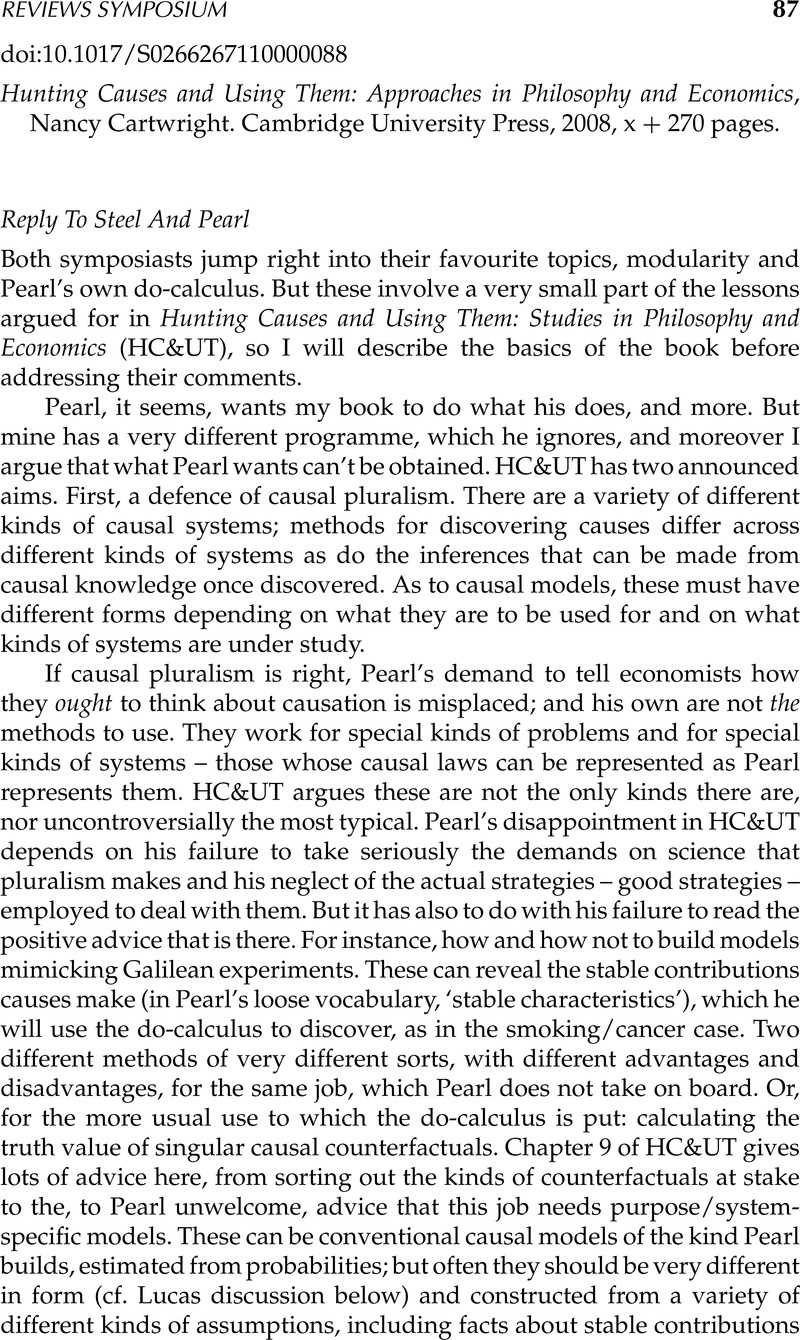Published online by Cambridge University Press: 17 March 2010

1 For example, CMC may readily fail if there is selection bias. This is a particularly interesting case because defining selection bias in a usable way that does not presuppose knowledge of just those parts of the causal structure under investigation is tricky, perhaps even impossible.
2 Steel would call this a ‘semantics’. Note that, from my pluralist point of view, this is a metaphysics for the particular causal relation under study, not for the causal relation wheresoever it appears.
3 This is much like the way the axioms of a physics theory implicitly define the theoretical concepts involved in them. In the case of causality and Bayes nets, the antecedently understood concepts are primarily probability concepts.
4 In the latter case one could either maintain that the connection is supported empirically or insist that only cases where the further manipulation conditions obtain are entitled to be called causal. I take it neither Steel nor I favour this last claim.
5 With respect to James Woodward's interpretation that Steel mentions, HC&UT does a similar thing: It provides a ‘representation theorem’ showing that Woodward's ‘level invariance’ interpretation is appropriate to causal laws systems where causation is asymmetric, irreflexive and all true functional relations derive from the basic causal laws.
6 Which Suppes would surely want to allow since for him probabilistic/deterministic are distinctions relative to a model.
7 The chapter on Hoover, reading directly from his own definitions, attributes to him a remarkable and original use-based theory of causality but one that is concomitantly not so responsive to standard methods for ascertaining causes. Hoover himself claims this is a mistaken understanding of what he intends. This is a topic for extended discussion, but not in this symposium.
8 Assuming independent evidence that the causes have a stable contribution to make in the first place.
9 I call this ‘underlying structure’ a ‘nomological machine’ (cf. my Nature's Capacities and their Measurement, 1989, OUP) because it gives rise to law-like regularities. Steel and others sometimes call it a ‘mechanism’. I avoid ‘mechanism’ because it has too many different meanings.
10 For more on this, see my APA Presidential address.
11 As they can since they are variation free.
12 What is it for a regression equation to be causally correct and what is it to pass the test for concomitant variation? I think answering either of these, as I do in HC&UT, makes a small contribution to getting our causal methodology straight.
13 In the chapter ‘Getting Causes from Probabilities: Cartwright on Simon on Causation’.
14 Note that I don't say, here or in the passage quoted from me, that the antecedent must be atomic. I apologize if what I wrote can be read that way.
15 As I characterize Hoover. See note 7.
16 For instance, following Pearl's suggestions in equations (1–4), in * substitute new values for pt without changing θ. This is not what the government can actually do in the long run according to Lucas.
17 As must the information about how this contribution combines with contributions from other causes. Contributions in mechanics add vectorially, but not those in economics. HC&UT describes a number of different schemes from physics and from economics for combining contributions.
18 So long as the expression is well-formed.
19 Plus an assumption of an original causal ordering on the variables that we haven't discussed, and an assumption about the general functional form, also not discussed here.